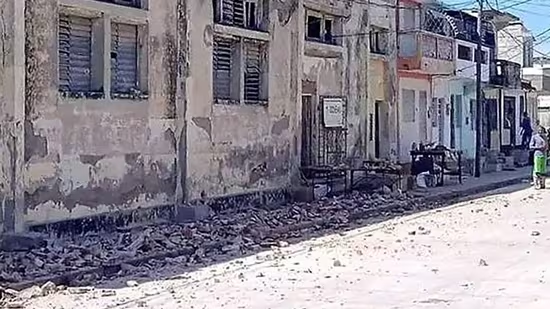
Eastern Cuba recently experienced a significant natural event when an earthquake with a magnitude of 6.8 struck the region, leaving residents in shock and triggering responses from emergency services. The seismic activity, which originated off the island’s coast, was felt across various provinces and sent waves of concern through communities already vulnerable to natural disasters.
Details of the Earthquake
The earthquake struck in the early hours, with its epicenter located off the eastern coast of Cuba, near the Caribbean tectonic boundary known for its seismic activity. The tremor was strong enough to be felt in cities such as Santiago de Cuba and Guantánamo, causing buildings to sway and prompting people to evacuate their homes in search of safer areas. The shaking reportedly lasted long enough to create a palpable sense of alarm among residents, with many taking to social media to share their experiences and report damage.
Immediate Impacts and Response
While there were no immediate reports of fatalities, the earthquake caused significant disruptions. Local authorities reported structural damage to older buildings and infrastructure, especially in the cities closest to the epicenter. Roads and bridges in some rural areas showed signs of stress, making travel and transport difficult. Emergency services were quickly mobilized to assess damage and offer assistance where needed.
Eastern Cuba rocked by earthquake
The government issued safety advisories, urging citizens to remain cautious due to potential aftershocks. These aftershocks, though typically less intense, could pose additional risks to weakened structures and cause further anxiety among the population.
Hospitals and healthcare facilities were put on high alert, ready to treat potential injuries and manage cases of trauma or shock among residents. While initial reports did not indicate widespread injury, the medical teams prepared for a potential influx of patients as assessments continued.
Preparedness and Challenges
Cuba’s history with hurricanes and tropical storms has equipped the nation with a certain level of preparedness for natural disasters, but earthquakes pose unique challenges. The island’s building infrastructure, particularly in historic and rural areas, is not always designed to withstand strong seismic activity. This presents concerns about the structural integrity of many homes and public buildings, especially in eastern provinces.
Authorities and experts emphasized the importance of reinforcing buildings and improving construction standards to better prepare for future seismic events. Local engineers and disaster management experts have long advocated for more comprehensive earthquake preparedness measures, highlighting that while storms and hurricanes are more common, the risk of significant earthquakes cannot be overlooked.
Public Reaction and Solidarity
The event prompted an outpouring of support and solidarity among Cubans, both domestically and from the Cuban diaspora abroad. Social media became a platform for expressing concern and checking in on loved ones. Many residents shared updates and photos of damage to raise awareness of the situation on the ground. Community groups quickly mobilized to offer help, underscoring the resilience and unity that often emerge in the face of adversity.
International organizations and neighboring countries also expressed their readiness to assist if needed. Relief agencies monitored the situation closely, prepared to offer aid or coordinate with Cuban authorities should conditions worsen or further assistance be required.
Historical Context and Geological Insights
Eastern Cuba is no stranger to seismic activity due to its position near the boundary between the North American and Caribbean tectonic plates. While hurricanes are the more frequently experienced natural events, earthquakes in this region are not unprecedented. Historical records indicate that significant earthquakes have occurred in the past, prompting scientists and officials to consistently monitor seismic activity.
The 6.8-magnitude tremor adds to a broader understanding of the region’s seismic patterns and highlights the importance of continuous research and investment in early warning systems. Geologists pointed out that while this earthquake was substantial, it serves as a reminder of the tectonic forces that shape the Caribbean region.
Moving Forward
As the immediate shock of the earthquake subsides, the focus will shift to recovery and rebuilding. Authorities and engineers will conduct thorough inspections to ensure the safety of structures and determine what repairs or reinforcements are necessary. Additionally, disaster management plans will likely be revisited, reinforcing the need for enhanced readiness in the face of such unpredictable natural occurrences.
For the residents of eastern Cuba, the earthquake was a stark reminder of their region’s vulnerability to natural disasters. However, it also showcased their collective strength and the importance of preparedness, community support, and resilience in overcoming the challenges posed by nature.
Source: SABC
In other news – Drake receives a sweet thank you note from 7-year-old son Adonis
Drake, the global music sensation and devoted father, recently shared a heartfelt moment involving his young son, Adonis. The rapper received a touching note from 7-year-old Adonis, which he proudly showcased to his millions of fans.
The sweet message from his son was a testament to the deep bond between the pair and offered a rare glimpse into Drake’s life away from the stage. Read more












